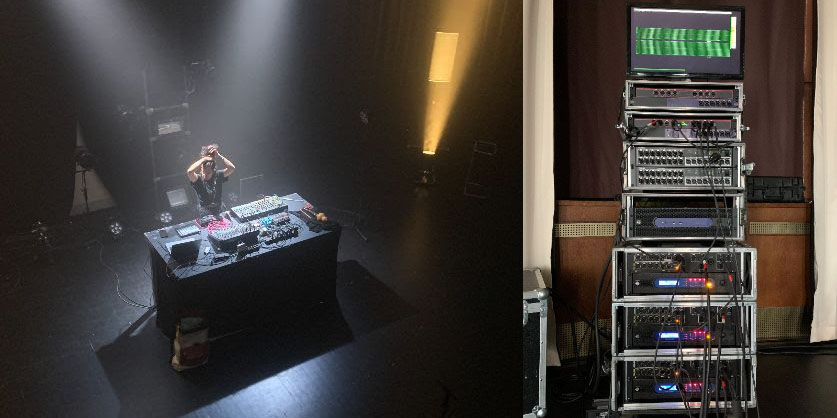Two album launch events for “Life is Sick,” the latest work from Switzerland-based French composer Marie Delprat, were enhanced by an immersive sound reinforcement system built around the CODA Audio Space Hub platform working with supporting components in a design by audio specialists Schallwerk working with Maxime Le Saux, the artist’s sound engineer.
The performances were staged at Gare du Nord in Basel and Dampfzentrale’s Boiler House in Bern, both venues that place emphasis on staging original, contemporary-style concerts. Rehearsals were conducted at Schallwerk’s warehouse, enabling the engineers and artist to experiment with the proposed system. Once they had fulfilled their aims in this setting, the team were confident that the use of CODA’s System Optimiser simulation software and the scaling parameter within the Space Hub Control, would take care of the move to the live venues.
Le Saux settled on a dual-layer quadrophonic system. At Gare du Nord, the ear height layer was comprised of four CODA G715 three-way point source loudspeakers and two SCV-F sensor-controlled subwoofers while the elevated layer comprised four G308-Pro compact boxes. A single SCP dual 18-inch sub was used as low-frequency extender.
At Dampfzentrale, the ear level layer consisted of four HOPS12T with two SCV-F subs, with four HOPS8T taking care of the elevated layer. Again, a single SCP sub acted as a low-frequency extender. Three CODA LINUS14D DSP amplifiers powered the loudspeakers at both gigs, with the Space Hub immersive processor, Yamaha QL1 console, and several Apple laptops completing the system.
“Both the artist and Maxime used Ableton Live to either play and/or process sounds,” explains Matthias Dietrich, system engineer and sales rep at Schallwerk, which is also based in Switzerland. “Although primarily using synths, Marie also played the flute — she is classically trained — and a straightforward [Shure] SM58 mic for creating more sounds. Maxime used the CODA Audio Space Hub plugin within Ableton to create movements and transitions via LFOs, controlling Azimuth and Distance parameters in Space Hub.
“All audio signal path was done via Dante. The complex signal setup comprised some inputs going directly into Space Hub, whilst some signals went first to the console for processing. Dedicated outputs from the processor were then sent via Dante to CODA Audio LINUS14 amplifiers. Space Hub also allowed us to record the binaural mix down.
“In this scenario, with a single artist on the floor (no stage was used) we aimed for a fully surrounding approach in the acoustic domain,” he continues. “Our purpose wasn’t to create a visual reference to any particular position (i.e., the artist) in the room with the Space Hub’s object-based mixing, but rather that the loudspeaker system should mimic a hemisphere on all three axes (XYZ) as much as possible, with many sounds constantly turning to create a non-directional but fully immersive feeling. Specific sounds like the vocal and flute were then focused more to the position of the artist, and treated with the reverb engine within Space Hub.”
Le Saux and Dietrich handled system setup and tuning, the latter working with CODA’s LINUS control software for the amplifiers. As well as the time alignments to the tops, delay and/or level adjustments were applied to both layers to further enhance the hemisphere approach of the system.
“From a technical point of view, we were definitely able to create the space we had aimed for — using the Space Hub control software and the plugin was straightforward and the network setup easily done — pretty much plug and play,” Dietrich concludes. “Coming from the rehearsals to the venues meant making some adjustments in scaling, which worked well in conjunction with System Optimiser and the scaling parameter within Space Hub control. Positioning the objects in the space also worked very well, both static and dynamic, via the LFO-controlled plugins.




















